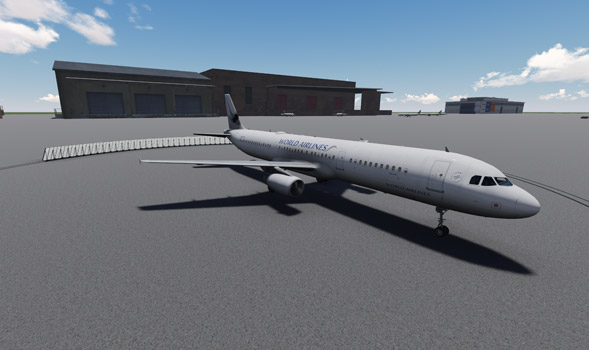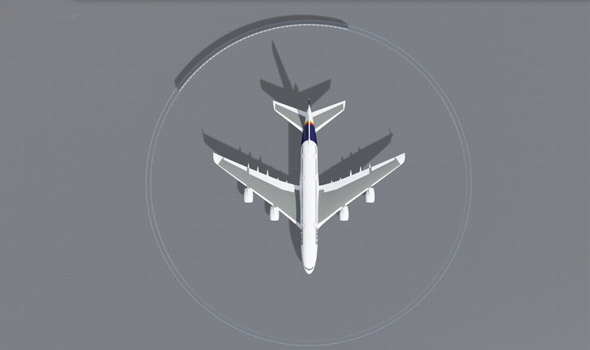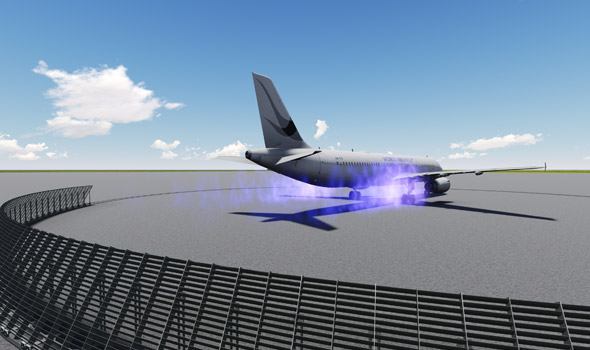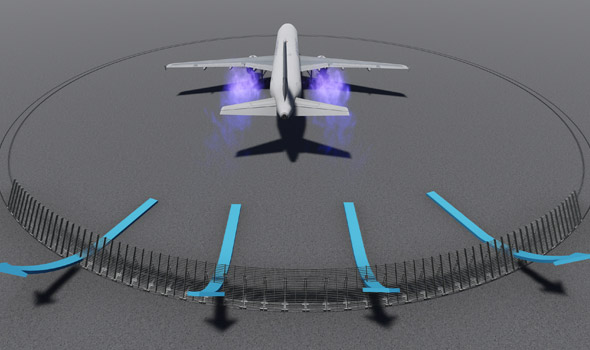BLAST FENCE
It is a special safety structure that protects manpower and facilities by distributing high temperature wind upward which is generated after aircraft maintenance and engine test. Previous blast fence had restricted mobility as towing truck was used for moving 90 ton-blast. But D&S applied optimized design by replacing lower frame from rectangular shape to trapezoid shape with 1 wheel inside and 2 wheels outside so that it can make circular motion around the aircraft. The company has developed blast fence that could be moved with 1 ton truck. Moreover, the rail guide embracing the rail has been designed with safety which can easily be rotated and resistant to 90m/s typhoon.
Product Features

Previous rectangular blast fence has been replaced with trapezoid shape

Can be moved with 1 ton

Resistant against 90m/s typhoon (assured safety)

Moves by sweeping rail surface and downward even on snowy or icy road
Difference with previous blast fence
01 Manufactured with total 3 wheels (1 wheel inside and 2 wheels outside)
02 The lower frame has been changed from rectangular shape to trapezoid shape. It has been designed with optimized function that rotates along the circular motion around aircraft which can be moved with 1 ton truck.
03 Rail guide embracing the rail is resistant against strong typhoon.
04 Consideration of additional rail breaks besides existing filter press break
05 Stable design of guide wheel house which minimizes wind resistance of wheels by replacing it from rectangular shape to cone shape
06 Designed with an ice scraper so that it could sweep snowy or icy road
07 Applicable even to the biggest aircraft (A380)
Blast Fence Operation Method

01 Make sure the head of aircraft is placed opposite to the blast fence.

02 Position the aircraft at the center of blast fence area.

03 It is how high temperature air gets out from the engine of the aircraft.

04 The blast fence moves the air upward so that there will be no secondary damage.


